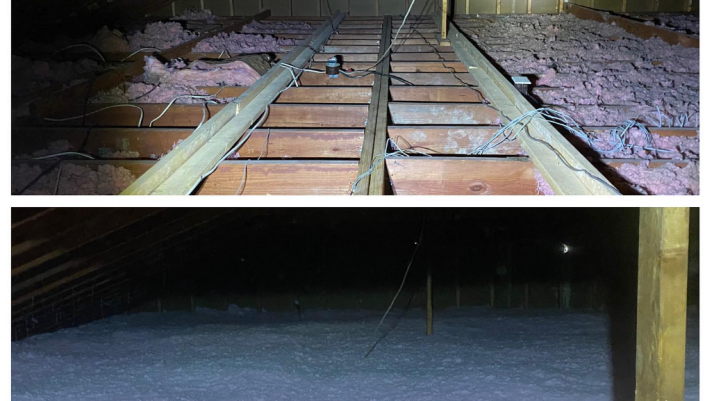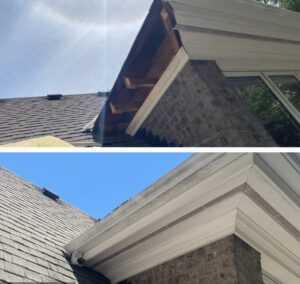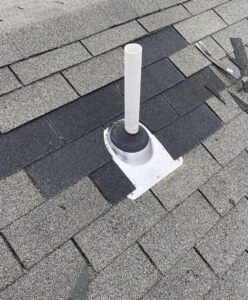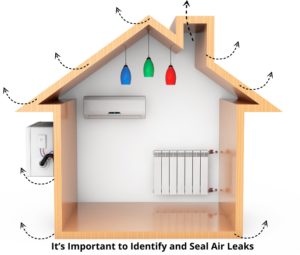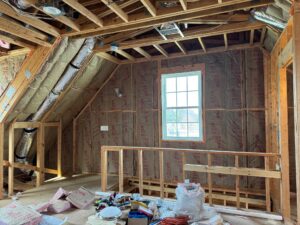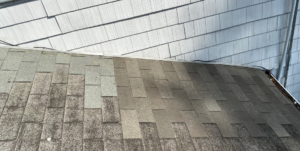Are you tired of receiving high energy bills each month? Your attic insulation might be to blame. Many homeowners overlook the importance of proper attic insulation in terms of energy efficiency. In this blog post, we will explore how poor attic insulation can lead to high energy bills and what you can do to rectify the situation.
Understanding the Role of Attic Insulation in Your Home's Energy Efficiency
Attic insulation is a critical component in the energy efficiency puzzle of your home. It acts as a barrier that keeps climatic extremes at bay, maintaining your home’s internal temperature at a comfortable level. In the colder months, insulation in the attic prevents the heat generated by your heating system from escaping through the roof. Conversely, during the hotter months, it blocks the sweltering outdoor air from infiltrating your living spaces. This thermal regulation is vital for reducing the workload on your heating, ventilation, and air conditioning (HVAC) system.
When the attic lacks proper insulation, the HVAC system compensates for the temperature imbalance by operating more frequently and for longer durations. This increased operation elevates your energy consumption and hastens wear and tear on your system, potentially leading to premature breakdowns and costly repairs. Therefore, enhancing your attic’s insulation level can lead to significant energy savings by stabilizing your home’s internal temperature and allowing your HVAC system to operate more efficiently.
Signs Your Attic May Lack Adequate Insulation
Identifying whether your attic’s insulation is insufficient is critical to addressing high energy costs and ensuring a comfortable indoor environment. Several indicators can signal an inadequacy in your attic’s insulation. If you’ve observed fluctuating temperatures within your home, with some rooms feeling significantly warmer or cooler than others, this could be a red flag. Such inconsistencies often result from heat escaping during the winter or entering during the summer due to inadequate attic insulation. Another common sign is the presence of drafts or noticeable cold spots, especially in areas directly below the attic. These can make certain areas of your home less comfortable and force your HVAC system to work overtime to compensate for the loss of heat or the influx of hot air.
An unambiguous indicator is a spike in your energy bills without a corresponding increase in usage. If your heating or cooling costs have unexpectedly risen, it could be a sign that your attic is not insulated correctly, causing your HVAC system to consume more energy to maintain comfortable temperatures. Lastly, suppose you venture into your attic and find the insulation thin, damaged, or unevenly distributed. In that case, it indicates that your attic insulation is not performing its job effectively. Addressing these signs promptly can prevent further energy loss and contribute to a more energy-efficient home.
How Poor Attic Insulation Affects Your Energy Bills
The detrimental impact of substandard attic insulation on your energy bills is multifaceted. The lack of adequate insulation primarily forces your HVAC system into overdrive, struggling to maintain a stable indoor temperature amidst the relentless heat exchange through the attic. This leads to an uptick in energy consumption and subjects your system to increased stress and potential wear. As your heating or cooling unit endeavors to compensate for the thermal inefficiencies, the duration and frequency of its operation surge, directly influencing the cost reflected on your monthly energy statement. Additionally, the energy inefficiency stemming from poor attic insulation extends beyond just increased operation costs; it can precipitate a cycle of continuous climate control challenges, further exacerbating energy expenditures. The consequent financial ramifications are immediate, in terms of heightened monthly bills, and long-term, as the escalated demand on your HVAC system may precipitate premature failures and require costly repairs or replacements. Investing in optimizing your attic’s insulation not only curtails these unnecessary expenses but also contributes to the overall energy resilience of your home.
Different Types of Attic Insulation and Their Benefits
The various attic insulation options on the market cater to different needs, preferences, and budgets, each offering unique advantages.
- Fiberglass batts are a popular choice, and they are known for their ease of installation and affordability. They come in pre-cut panels that fit snugly between attic joists, making them ideal for DIY projects.
- Made from recycled paper products and treated for fire resistance, blown-in insullation fills in gaps and crevices with precision, providing a comprehensive thermal barrier. It boasts superior thermal properties, effectively reducing heat transfer and enhancing your home’s overall energy efficiency.
Each of these insulation types plays a pivotal role in fortifying your attic against energy loss; selecting the right one hinges on your specific insulation needs, the existing state of your attic, and your budgetary constraints.
Professional vs. DIY Attic Insulation: What You Need to Know
Deciding whether to embark on attic insulation as a DIY project or to engage a professional service is a significant choice that can influence both the efficiency of the insulation and potential energy savings. Opting for the DIY route may appear cost-effective initially and feasible for those with experience in home improvement tasks. It allows homeowners to have direct control over the timeline and specifics of the project. However, without the proper knowledge, tools, or experience, you might not install the insulation optimally, potentially leaving gaps or compressing the material, which diminishes its effectiveness.
On the other hand, hiring professionals offers several advantages. Experts bring a wealth of experience and are equipped with specialized tools and knowledge of the latest insulation techniques and materials. They can assess your attic space comprehensively, identifying the most suitable type of insulation and pinpointing areas prone to air leaks or moisture problems that a DIY approach might overlook. Their expertise ensures that the insulation is installed correctly, maximizing its performance and your home’s energy efficiency.
Additionally, professional services often come with warranties and guarantees on the work performed, providing peace of mind that the investment is protected. While the initial cost may be higher than a DIY project, the long-term savings on energy bills and the potential avoidance of costly mistakes can make hiring a professional more economically sound.
Simple Tips to Enhance Your Attic Insulation and Save on Energy Bills
To maximize your attic insulation’s effectiveness and achieve energy savings, it’s essential to conduct regular checks and maintenance. One of the first steps is sealing air leaks around fixtures, ducts, and windows in the attic, as these can significantly undermine insulation’s performance by allowing warm or cool air to escape. Use caulk or foam sealants for smaller gaps and expanding foam or insulation strips for larger openings. Additionally, assess the current state of your insulation to ensure it’s up to code and covers the attic floor evenly without any gaps. Consider adding more if you find areas where the insulation is thin or missing. Choosing the right type of insulation to supplement your existing setup is crucial; options such as fiberglass, blown-in attic insulation can be matched to your specific needs and the characteristics of your attic.
Remember, proper attic ventilation is equally vital; it prevents moisture buildup and helps maintain a stable temperature, further enhancing the efficiency of your insulation. Implementing these strategies bolsters your attic’s defense against energy loss and contributes to significant cost savings over time.
Bottom Line: Take Control of Your Energy Bills Through Better Attic Insulation
Addressing your attic’s insulation is crucial to mitigating excessive energy costs and fostering a more energy-efficient household. The journey to achieving this starts with recognizing the signs of insufficient insulation and understanding its pivotal role in maintaining your home’s thermal balance. From there, exploring the array of insulation types and determining the most suitable one for your needs lays the groundwork for enhanced energy savings. Whether you opt for a DIY approach or seek professional assistance, the objective remains to ensure a properly insulated attic that supports optimal energy use. Implementing additional measures, such as sealing air leaks and maintaining appropriate ventilation, maximizes your insulation efforts’ benefits. Embrace the opportunity to improve your home’s insulation, and you’ll contribute to a more comfortable living space and substantially reduce your energy bills. Making informed decisions about your attic insulation is a proactive move toward environmental stewardship and financial savings, marking a significant step in managing your home’s energy consumption.
Contact ZHE Industries today to schedule an appointment to remove the insulation, install new insulation, and clean the attic.

